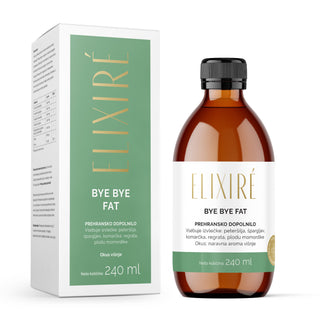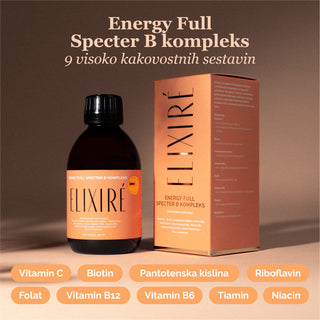As the days get shorter and light becomes scarce, the body starts sending subtle signals of fatigue, lack of energy, and lower immunity. And it's no coincidence – vitamin D plays a key role in almost every system in our body.
It acts as a silent regulator of the immune response, affecting muscle function, bone health, and even our mood and sleep quality. In other words: when we have enough vitamin D, the body functions more harmoniously, calmly, and resiliently – from the inside out.
Vitamin D deficiency – a silent modern pandemic
More than 60% of Europeans are vitamin D deficient, especially in the autumn and winter months. Why? Because we spend most of the day indoors, and the sun's rays are too weak in our geographical area from October to April for the body to produce enough vitamin D.
The body produces vitamin D on its own, but only when UVB rays reach the skin – without sunscreen, through direct exposure. And because we almost never do this in practice (for good reason – skin protection), most people simply don’t achieve optimal levels of this vitamin.
Why is vitamin D so crucial?
Vitamin D is more than just a vitamin – it is a prohormone that affects over 450 genes in our body and 4,500 immune system functions. Therefore, a deficiency is not only reflected in fatigue – but in a whole spectrum of psycho-physical imbalances.
Key roles of vitamin D:
-
- contributes to the normal absorption/utilization of calcium and phosphorus
- contributes to normal blood calcium levels
- contributes to maintaining healthy bones and teeth
- contributes to muscle function
- contributes to the functioning of the immune system
- plays a role in cell division
Symptoms of vitamin D deficiency
You might not think so, but fatigue, frequent colds, and mood swings can be your body's first warning signs. The most common symptoms include:
- Exhaustion and general lack of energy
- Frequent infections (colds, viruses)
- Poor concentration and irritability
- Muscle cramps, bone and joint pain
- Mood swings, depression, or anxiety
- Poorer sleep quality
- Increased weight gain
When deficiency is chronic, the risk of autoimmune diseases, osteoporosis, cardiovascular disease, and even some forms of cancer can also increase.
Vitamin D and the immune system – protection from within
Vitamin D acts as a conductor of the immune system. Vitamin D receptors are found in almost all immune cells, where the vitamin activates their function. When vitamin D levels are low, the body's defense mechanisms slow down - and this can mean more frequent infections, slower healing, and lower immunity.
Studies confirm that supplementing with vitamin D3 throughout the winter reduces the incidence of flu and colds by stimulating the function of white blood cells and reducing the body's inflammatory responses.
Vitamin D and mood
Have you noticed that you often feel “heavy energy” during the winter? Research has shown a strong link between low vitamin D and depressed mood. During the winter months, when there is less sunlight, levels of serotonin – the happiness hormone – drop, leading to seasonal fatigue and apathy.
D3 helps regulate neurotransmitters, thereby contributing to better well-being, greater motivation, and better concentration.
The connection between vitamin D, calcium and magnesium
Vitamin D3 is needed for optimal calcium absorption in the body. If it is deficient, calcium, even if we consume enough, is not absorbed effectively. Therefore, it is recommended to take vitamin D3 with magnesium, which helps with its metabolism and activation.
How to get enough vitamin D
In theory – with enough sun. In practice – almost impossible. That's why a quality nutritional supplement is often the only reliable solution.
Best sources:
- Sun (10–20 minutes a day on unprotected skin – when conditions allow)
- Dietary supplements with a natural source of vitamin D3
- Liposomal form of vitamin D3 for better absorption and stability
Food (fish, egg yolks, fortified dairy products) does contain some vitamin D, but in amounts too low to meet daily needs.
How much vitamin D3 do we need?
The European Food Safety Authority (EFSA) sets a safe upper limit for adults at 100 μg (4,000 IU) per day. In practice, most experts advise 2,000–4,000 IU per day during the autumn-winter period – from October to April. Testing your blood vitamin D levels (25(OH)D) is recommended at least once a year. The optimal level is between 50 and 80 μg/L.
Vitamin D as part of your daily routine
Like a cup of morning elixir, vitamin D is part of your daily self-care routine. It helps maintain balance in body and mind, while supporting what is at the heart of the Elixiré philosophy – inner health as the foundation of outer radiance.
Therefore, we recommend:
- D3 in natural, highly bioavailable liposomal form
- regular consumption throughout the cold months
Vitamin D is one of those "invisible" vitamins that we only notice when we're deficient. But when we provide our body with enough of it, it shows – in energy, mood, immunity, and vitality. Not just in winter, but all year round.
So – make sure your body doesn't crave the sun even when it's shining. Make your daily ritual a source of inner balance.
My ritual. My body. My Elixiré.
Sources:
-
-
Journal of Investigative Medicine. Vitamin D and the immune system.
https://www.ncbi.nlm.nih.gov/pmc/articles/PMC3166406/ -
Nutrients. Vitamin D: nutrient, hormone and immunomodulator.
https://www.ncbi.nlm.nih.gov/pmc/articles/PMC6266123/ -
National Institutes of Health - Office of Dietary Supplements. Vitamin D – consumer information sheet.
https://ods.od.nih.gov/factsheets/VitaminD-Consumer/ -
Journal of Inflammation Research. The role of vitamin D in immune system function and inflammatory bowel disease.
https://doi.org/10.2147/JIR.S363840 -
Epidemiology and Infection. Epidemic influenza and vitamin D.
https://pubmed.ncbi.nlm.nih.gov/16959053/ -
American Journal of Clinical Nutrition. A randomized study of vitamin D supplementation for the prevention of seasonal influenza A in children.
https://pubmed.ncbi.nlm.nih.gov/20219962/ -
Journal of Inflammation Research. Vitamin D and inflammatory diseases.
https://www.ncbi.nlm.nih.gov/pmc/articles/PMC4070857/ -
Yale Medicine. Myths about vitamin D – dispelled.
https://www.yalemedicine.org/news/vitamin-d-myths-debunked -
Journal of Investigative Dermatology. Recommended levels of summer sun exposure to achieve sufficient vitamin D concentrations in temperate latitudes.
https://pubmed.ncbi.nlm.nih.gov/20072137/ -
PLoS ONE. Pre-infection 25-hydroxyvitamin D3 levels and association with COVID-19 disease severity.
https://journals.plos.org/plosone/article?id=10.1371/journal.pone.0263069
-








